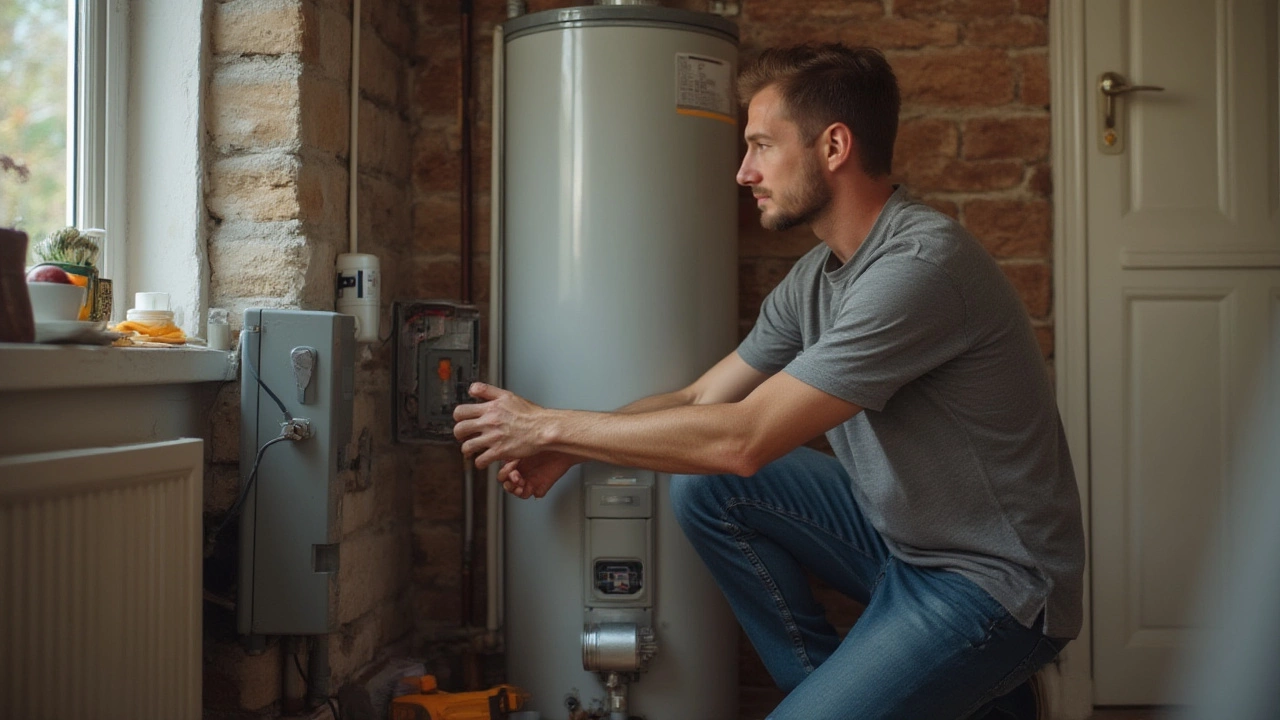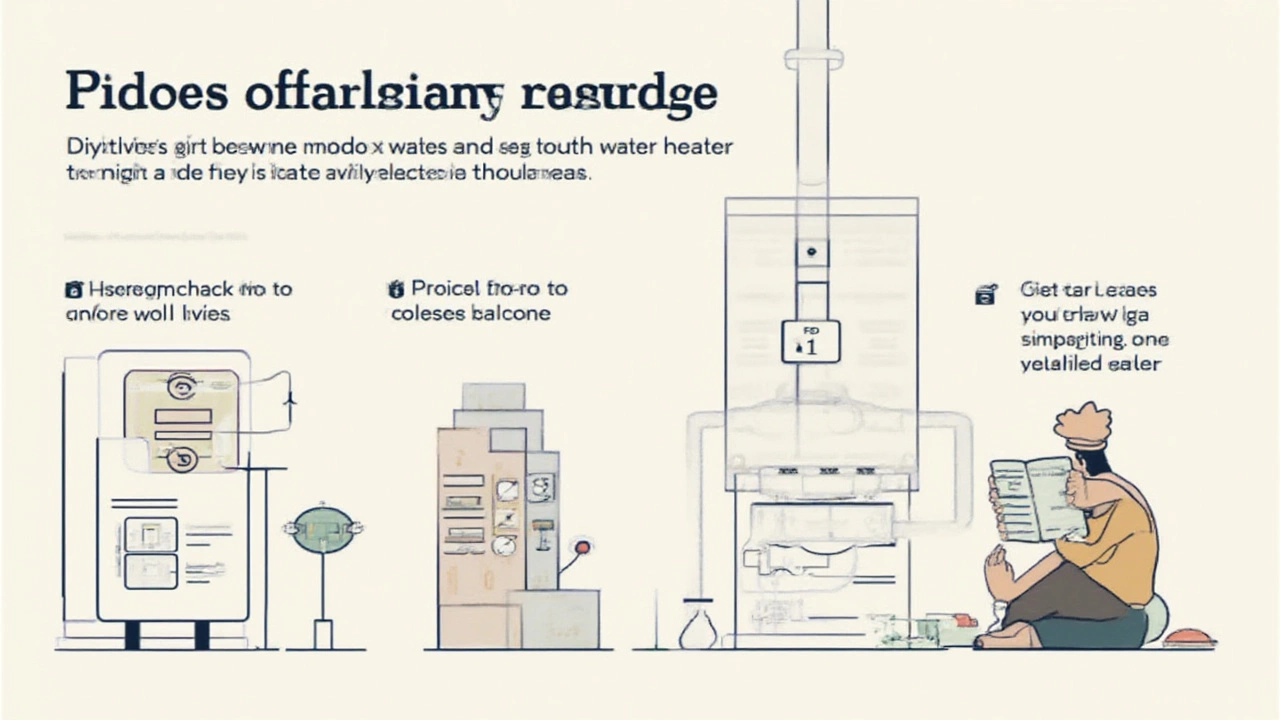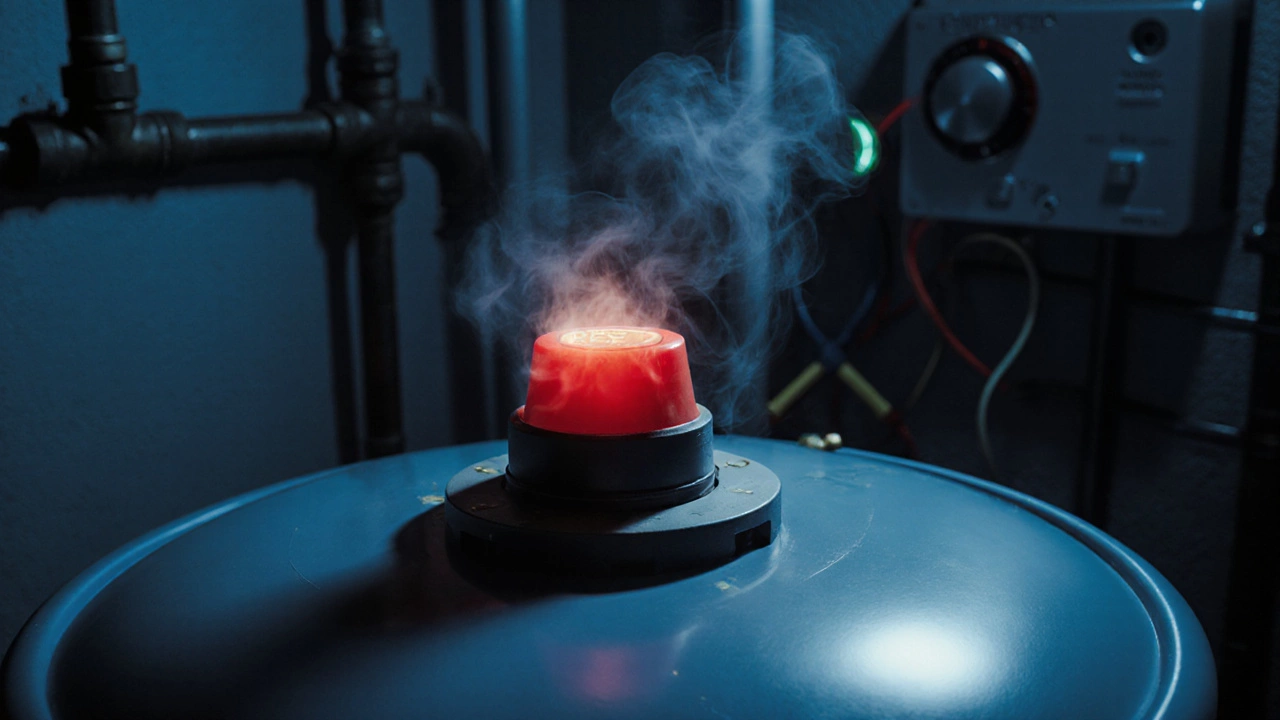
- 6 Jul 2025
- Gideon Thornton
- 0
Ever gone to take a shower and gotten hit with ice water because the heater called it quits? Happens to more people than you think—especially early on a Saturday when you’ve got somewhere to be and a 7-year-old refusing to get out of bed. So, you paddle out to the water heater, maybe juggle a torch and an old Phillips screwdriver, and you stare at that red reset button. Here’s the question: before you press anything, do you really need to kill the power at the breaker?
How Water Heater Reset Buttons Actually Work
The red button is often called the "high-limit reset" or just "reset." It’s basically a safety valve for your heater’s brain. It’s there to cut off the power if the water ever gets dangerously hot—like, hot enough to burn skin in two seconds. Most modern electric water heaters have this feature and place the button right behind a small metal or plastic panel, usually near the thermostat.
Here’s how things usually go wrong: imagine mineral buildup from Bristol’s hard water crusts over the element, making it overheat. Or maybe the thermostat goes rogue and tells the heater to keep running. The reset button acts like a bouncer, breaking up the party before your tank turns into a pressure cooker. The idea is to prevent scalding or, worst-case, an explosion. (Trust me, you don’t want Soren or anyone else’s kid near that!)
If your heater cuts out and won’t warm up again, you’re probably staring at a tripped reset button. But here’s where things can get confusing. The button is built to handle electricity. You can press it without shutting off the breaker—technically. But is that really the best move?
Do You Need to Turn Off the Breaker First?
Let’s cut to the chase. Nearly every water heater’s manual tells you to switch off the breaker before messing with the reset button. Even if the plastic cover is on tight, you’re just inches from some juicy live wires. Pressing the button with live power isn’t the world’s most dangerous thing, but it isn’t risk-free either—especially if that cover isn’t snug, if your hands are damp, or if you’re not 100% sure what you’re touching.
Electricity can arc—you don’t have to see bare copper for something to zap you. And honestly, a zap from a household circuit is no joke. Turning off the breaker is one small step that massively drops your risk. Hit the breaker labeled “water heater”—or, if your home’s labeling is like mine, “that switch you can never find”—and double-check that the heater is dead. Touch the tank: if it’s warm, fine. If you hear hissing or humming, or see any lights still on, triple-check the breaker. A £10 voltage tester from a hardware shop can confirm the power’s actually gone. If I’ve learned anything from fixing stuff in Bristol, it’s that never trusting an old fuse box saves a lot of grief.
Now, if you’re thinking, “I reset it live last year and survived,” sure—lots of DIY folks do. But you only need one slip or worn wire to turn a quick fix into a trip to A&E. It’s a gamble, and there’s no prize for shaving 30 seconds off a reset. Play it safe. Flip the breaker first.

The Right Way to Reset Your Water Heater
If you’re here for a step-by-step, let’s make it foolproof. You don’t need an electrician’s toolbox—just patience and maybe a mug of tea to pass the cooldown time.
- Find your switchboard and shut off the breaker labeled for the water heater. If you’re not sure which one, turn off the main breaker for the house just to be sure (then warn the kids the WiFi’s going down for five minutes).
- Pop off the heater’s access cover—should just require a Phillips head screwdriver. There’s probably some insulation stuffed inside—pull it back gently, don’t just toss it on the wet floor.
- Look for the red reset button. Sometimes it’s tiny and near the thermostat. Give it a firm press—if it’s tripped, you’ll probably feel (or hear) a click.
- Replace the insulation and screw the cover back on. Don’t leave wires hanging open.
- Turn the breaker back on. Listen for any odd noises—if you see jets of steam or a burning smell, switch off again and call a professional.
- Wait about 30 to 45 minutes for the tank to heat up. Go check your hot water tap—it should be getting toasty. If not, something else is wrong.
Here’s a weird thing: if your heater asks to be reset again and again, it’s not just being needy—something’s likely busted. The reset button is not a band-aid for a deeper issue. Chronic tripping means the thermostat is shot, the heating element’s failing, or you’ve got wiring that’s starting to misbehave. Don’t ignore it or you’ll end up paying more for electricity, or in the worst case, dealing with leaks in your utility cupboard. That’s a Saturday ruined for sure.
Extra Tips and Safety Facts Every Homeowner Should Know
You wouldn’t hand a toddler a chainsaw, right? Same rules with hot water and electricity: always double-check what you’re about to touch. According to the UK’s Health and Safety Executive, electrical injuries at home tend to spike in rooms where water is nearby—the bathroom, utility, or kitchen. So a little caution pays off huge.
Here are a few handy pointers I wish someone told me when I bought my place:
- If your water heater is tripping often, note when it happens. After a bath rush? After storms? Patterns help with troubleshooting.
- Don’t ignore pooling water or a tank that’s sweating more than a footballer on derby day. Leaks mean danger, especially near electrics.
- Write the installation date somewhere inside the access panel. That way, if a pro needs to check it, you’re not guessing if it’s still under warranty.
- If you’ve got hard water where you live (and most of Bristol does), invest in a de-scaler or flush out the tank every couple of years. Mineral buildup forces the element to work harder and trip off early, costing you more money for less hot water.
- Never bypass the reset water heater switch by holding it down or using tape. The safety system is there for a reason. If it trips, fix the root cause.
One last thing—kids are curious, and hot water can scald in seconds. Set the thermostat no higher than 49°C (120°F). It’s plenty warm for showers and stops accidents before they start. Aging heaters sometimes drift hotter than the dial says—so get one of those cheap stick-on thermometers to check your result at the tap.
If you’re ever stuck, call in an electrician or a plumber who does electrics (most local engineers in Bristol wear both hats now). Sometimes the fix is simple—a worn-out thermostat, a crispy wire—but if it keeps tripping, there’s no shame in getting a pro. Water and electricity don’t forgive mistakes.
Resetting a water heater is one of those “easy but not totally safe” jobs around the home. Is it possible to get away without flipping the breaker? Sometimes. Is it smart? Not really. Saving five minutes isn’t worth a shock, and prevention’s always cheaper than hospital bills. Next time you’re hunting for hot water, never skip the breaker—and grab a dry towel first.



